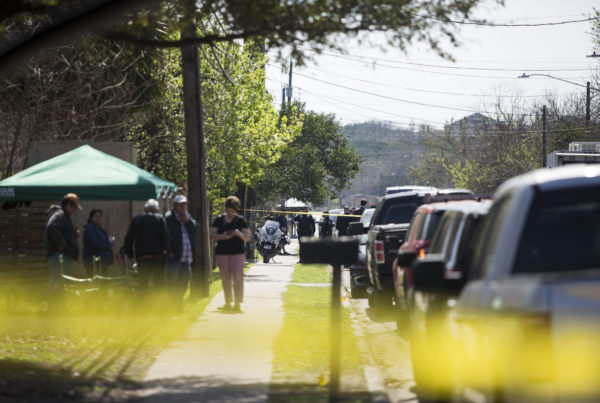If you grew up far from the border, you may only know of Oscar Zeta Acosta as the inspiration for Hunter S. Thompson’s, Fear and Loathing sidekick, Dr. Gonzo. There is a lot more to Acosta and a new PBS documentary, “The Rise and Fall of the Brown Buffalo,” tells the whole story of the Chicano activist.
“Oscar was a peculiar bird,” says director Phillip Rodriguez. “He was a big fat Mexican guy who was confrontational and funny and talented.”
Acosta had a sense he may not be appreciated in his own lifetime so he set about branding himself before there was such a notion. He gave himself many nicknames like Brown Buffalo, General Zeta and Doctor Gonzo, the last of which, would find a lasting place in the American imagination.
His story starts in El Paso. Acosta came from a time where there was an easy flow between El Paso and its sister city, Ciudad Juarez.
“Life on the border where it wasn’t that big scar, that big militarized wall,” Rodriguez says. “He describes El Paso and his experience there on the border very tenderly and with a great deal of nostalgia.”
Acosta then moved to California, a place he felt had much more rigid cultural and racial lines. He would become the first person in his family to receive a college education, eventually learning a law degree.
“The law disgusts him,” Rodriguez says. “He already realizes the fix is in and the rich get all the benefits and the rewards and the best protection.”
When he saw the dissent and poverty in Los Angeles he made it his mission to become a leader in the community.
“Oscar was so talented, and he was so crazy, and he was so hungry,” Rodriguez says. “He had kind of messianic feelings about himself. He had a sense of himself as a man of destiny.”
Acosta’s talents pulled him in many different directions. After he burned himself out practicing law, he left California. He went to Ketchum, Idaho looking for Ernest Hemingway’s grave so he could ask the writer’s for spirit permission to become a superior novelist. After that he found his way to Aspen, Colorado, where he met the young Hunter S. Thompson.
“According to Hunter, Oscar walked into the bar and announced he was the trouble we’d all been waiting for,” Rodriguez says. “There begins a real bromance.”
Rodriguez remembers watching the 2016 presidential election returns come in with his production team and thinking this was now a perfect moment for Acosta.
“This administration is using Mexicans as rhetorical fodder and is coming after the youngsters,” he says. “Oscar’s reemergence now is very timely.”
Acosta’s messiness has caused him to be overlooked by history – that’s why Rodriguez wants to present Acosta in all his messy glory.
“Most often, civil rights leaders are depicted in a monumental way. They’re already bronzed and polished and perfected,” he says. “All of their contradiction and their rage has been obscured.”
Acosta stayed on the fringe until he disappeared at age 39. His son is rumored to have been the last one to have seen him but no one is really sure what happened to the activist. He made claims that he was running guns, selling drugs, and planning to assassinate Richard Nixon. Rodriguez believes the mystery around Acosta’s final years only adds to his legend.
“It’s hard to really know what happened,” he says. “That’s why Oscar is kind of pristine. He remains mythic and I think he would like that. I think the audience will really like that.”
Written by Jeremy Steen
















